PRESERVING A MILITARY LEGACY FOR FUTURE GENERATIONS
The following Reflections represents LIC Jack De Merit’s legacy of his military service from 1961 to 1990. If you are a Veteran, consider preserving a record of your own military service, including your memories and photographs, on Togetherweserved.com (TWS), the leading archive of living military history. The following Service Reflections is an easy-to-complete self-interview, located on your TWS Military Service Page, which enables you to remember key people and events from your military service and the impact they made on your life. Start recording your own Military Memories HERE.
Please describe who or what influenced your decision to join the Navy.
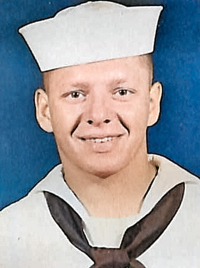
Many of us in a high school fraternity decided that the best way to complete our military obligation was to enlist in the Naval Reserve. As I was older than the others, I had already graduated when the Naval Reserve Recruiter came to Fairfax High School in Los Angeles to make his presentation. They were all Gung Ho, and they tried to convince me to join them. I told them that I would check it out on my own and give them an answer within the next week. As they were not graduating until the end of the semester, the only rush was that summer vacation would be a great time to do our Boot Camp. Being Reservists would allow us to continue our education while attending Reserve Meetings.
What influenced me the most was that the Navy actually trained people for individual careers. Having been a Printer since I was 4 years old, it sounded good to me. When I took the entrance exam in a classroom with about 40 others, I had no problem with the tests. While sitting in the lounge waiting for the results, two Commanders came in and asked where I was. I was a bit leery, but I raised my hand. They came over and asked if I would be interested in attending the Naval Academy and becoming an Officer. My first question was, why me? They informed me that I had the highest scores on the exam they had seen in some time and felt that my being an enlisted man would be a waste of an excellent mind. I told them I intended to serve my country with a single enlistment and return to being a printer. I asked them what would be involved with being an Officer. They said I would go to the Academy for four years and get a degree. Then, I would be a Commissioned Officer and be assigned to a duty station somewhere in the Navy. My obligation would then be for a minimum of 6 years of active duty. So I weighed a minimum of 10 years, with six being on active duty, against 8 years, with two being on active duty. I chose to be an enlisted Reservist. I felt I would have no problem making a rate if I was that smart. That was evident when I completed my 8-year obligation as a Second Class Lithographer due to take the First Class exam in one year. So I re-enlisted in the Reserves and 1 year later made First Class. Before my enlistment was completed, I was selected as the only Chief Lithographer that year. So, I was made Chief in 11 years and, because the Navy had no billets, remained as an E-7 until I was asked to retire with 28 years and 9 months of service.
When I questioned why I was being retired and not allowed to complete 30 years, I was told it was because I was not advancing in rate. After I stopped laughing, I decided it was for the best.
Whether you were in the service for several years or as a career, please describe the direction or path you took. What was your reason for leaving?

After nearly three years in the Naval Reserve meetings, it was time to do my two years of Active Duty. I convinced the Personnel Office to list me as a Lithographer Striker so that I would have a definite assignment when I reached whatever command I was sent to.
My initial idea was to serve my 8-year obligation and get discharged.
I was assigned to the USS Kearsarge, which I was informed was an Aircraft Carrier in the South China Sea. I did not understand why an Aircraft Carrier until I got aboard and found that she was equipped with a Print Shop. As I was expecting a shore facility and had never flown in a plane before, I experienced a number of firsts. There was a First Class Petty Officer, Joe Donohue, who was in charge along with two Third Class Lithographers. Within two days, I discovered that I knew more about Printing than all three of them combined. The First Class had absolutely NO knowledge about Cold Type typesetting or Offset Printing. The two Third Classes only knew what they learned in the Navy and in high school Print Shop classes, which wasn’t very much. As the First Class recognized my knowledge and abilities, he put me in charge of the Print Shop. As the Third Classes also realized my knowledge, they had no problem with it. I was advanced to Third Class within 4 months.
Having completed my two years of active duty, I was sent home to my parent Reserve Center to complete the balance of my Reserve obligation. When my eight years were complete, I was a First Class Petty Officer. The Career Counselor suggested that I re-enlist because it would guarantee my Rank and Rate if an emergency required me to be called back into the military. When I heard that all that I had worked for and obtained could mean nothing and that I could end up in the Air Force, Army, or Marine Corps, I re-enlisted. I joined the Naval Reserve in 1961 and was advanced to Chief Petty Officer in 1972. I spent 5 years as a Navy and Marine Corps Recruiter, 3 years as the Master at Arms, 6 years as the Department Head of Admin, 8 years as the Damage Control Training Officer, and my last 5 years as the Chief of the Boat of a Nuclear Submarine Repair Unit in San Diego and assigned to an Encino, California Reserve Center.
I finally retired in February of 1990 with 28 years and 9 months of service.
If you participated in any military operations, including combat, humanitarian, and peacekeeping operations, please describe those that made a lasting impact on you and, if life-changing, in what way?
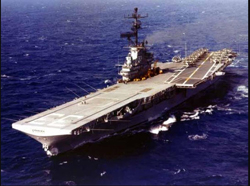
While onboard the USS Kearsarge, an Anti-Submarine Aircraft Carrier, I experienced several FIRSTS. I was flown off the Carrier several times. The first time was a deck launch. As I am not a fan of roller coasters, I was not happy when we reached the end of the flight deck and dropped about 70 feet. My second and most of my other launches were by catapult. Not much better than the deck launch, but you get used to it.
My first landing on the Carrier was also a bit of a surprise. I would watch takeoffs and landings whenever I had free time, so I knew what to expect. For my first landing, the pilot allowed me to sit in the co-pilot’s seat, and I swore there was not enough space on the Carrier’s deck to hold the plane despite my knowledge otherwise.
I also got to experience the JATO in one of the Hueys we had aboard. They said it got us out of the area at 650 miles an hour in just a few seconds. They said it would make us faster than the bullets coming at us. They lied. I counted five bullet holes in the fuselage when we returned to the ship.
Of all your duty stations or assignments, which one do you have fondest memories of and why? Which was your least favorite?
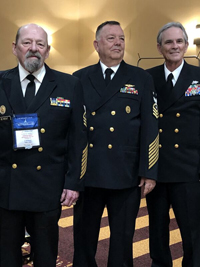
My fondest memories were aboard the Kearsarge. I met a lot of really great guys who seemed to recognize my leadership abilities far more than I did myself. When I was in charge of a Working party, I would always pitch in with the rest of the crew. They would give me a strange look and ask me why. I would explain to them that the sooner we got the job done, the earlier we would be finished with the assignment. They were so used to the Petty Officer in charge of just barking orders and sitting on his ass to watch them work. I would get a nasty look from every Petty Officer who went by because, according to them, it made them look bad. I always told them the same thing. If you work WITH your crew, they will think more of you and know that you are not just showing off that you are a Petty Officer and they are just the ignorant people who could not pass an advancement exam. They will respect you and work harder to get the job done sooner.
My least favorite duty station was with the Navy Printing Office in Long Beach, California. It was an environment that I was not used to. I was working with Navy personnel and civilians. The Navy personnel were easy to order around, and they were friendly. The civilians were always of the attitude that they did not have to listen to me or do anything I said because they were not in the military, so I was not their boss. I straightened them out quickly and had several resentful people working for me.
From your entire military service, describe any memories you still reflect back on to this day.

I signed a non-disclosure agreement that I would say nothing of the next events for a minimum of 50 years. That expired in September 2016. A nameless Admiral approached me for some special assignments. I was given a Psychological Profile test and passed with flying colors. I was informed that a number of special JOBS needed to be done, and based on the Psych exam, I was the most qualified for them. I was told about the non-disclosure agreement and that because I would not be recognized for ANYTHING I DID, there would be no medals or awards.
As I have never done anything that I wanted to be advertised and have never overtly sought recognition, I was OK with that.
Nearly every two weeks, I would be packed up and dropped behind enemy lines in Vietnam. I had a picture of who the Admiral needed to take care of and took care of them. That was the easy part. The hard part was disposing of the body and leaving no trace that I had ever been there. I carried out 49 missions and had absolutely no remorse. When I come across someone who doesn’t know me and wants to kill me, they go first.
What professional achievements are you most proud of from your military career?
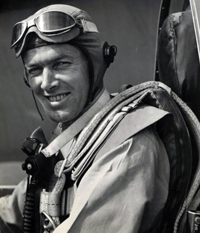
I am most proud of all the service I gave to my country and the Admiral I worked for. I am also proud of the Kearsarge, which received the Admiral Flatley Award for the Top Ten Best Carrier Newsletters for eight consecutive quarters due to my leadership in the Print Shop.
Of all the medals, awards, formal presentations and qualification badges you received, or other memorabilia, which one is the most meaningful to you and why?
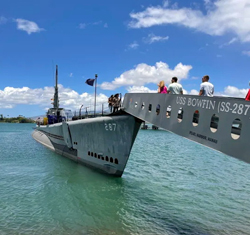
As I was not recognized for most of my “Jobs” in the Navy, the US Navy Retired Plaque I was given by my shipmates, along with the flag that was flown over the Submarine Memorial in Pearl Harbor, would be the two things I was most proud of.
Which individual(s) from your time in the military stand out as having the most positive impact on you and why?
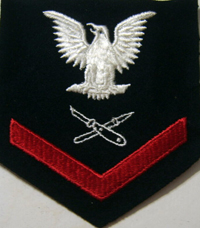
One of the things I discovered while serving on the Kearsarge was that not ALL personnel were trained well enough to do a decent job. As a 3rd Class Lithographer, I discovered that my 1st Class Lithographer in charge of the Print Shop knew less than one-quarter of what I knew about Printing. I guess that was why he could not advance any further after 20 years in the Navy. I made Chief Lithographer in 11 years of service and was recommended for Warrant Officer for three consecutive years until I asked the officers to stop. It seems that the only people they were being promoted to Ships Clerk Warrant Officer were female Yeomen and Personnel.
List the names of old friends you served with, at which locations, and recount what you remember most about them. Indicate those you are already in touch with and those you would like to make contact with.
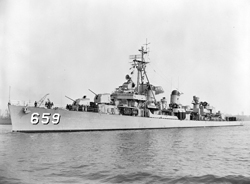
I had been a Printer since I was 5 years old when I passed the Printing Industries of America Typesetting Exam in 1948. I have worked in printing ever since then and have been adept at letterpress, offset printing, and all dark room, stripping, and plate-making procedures. That was why the LI1 Donohue put me in charge after talking to me for an hour after I reported aboard. I offered to help him make Chief, but he said no, he was about to retire. I surprised him when we had one of our Offset presses break down. I did not tell him I had completely dismantled and repaired the offset press. I offered to fix the press for him so we would not have to wait weeks for a repairman. Said O. It took me one hour, and it was running.
LI3 – Charles Harris was a former YN3 who decided printing was better than writing records and letters. We all served on the USS Kearsarge, CVS-3. He was a really nice guy and accepted me, an SN Striker, as the man RUNNING THE 9-MAN PRINT SHOP.
LI3 K – Tunnel: He was not happy with me running the Print Shop because he had been a member for 2 years and thought that I wasn’t worth it. When I trained him and taught him what he needed to know, he was advanced to LI3 about six months after I was advanced.
SN Terrance Jenkins was a really friendly guy who lived in Orange County, California. We got along very well because I lived in Hollywood, California, and we would talk about the different places we had been. However, he could not grasp printing well enough to advance in rate.
SN Martin Montibello and SN Floyd Beeler were also great guys. We hit it off immediately and agreed that on our first liberty, we would go ashore and spend the entire day getting to know each other. We did that just before getting orders to go to Vietnam.
SN Thomas Poole and SN Craig Phinney were also very friendly and nice. Sadly, they were far from ready to take the Advancement exam for the 3rd Class. I think they both requested the Print Shop because they felt it would be easier than working in the other fields.
Montebello, Beeler, and Tunnell all advanced thanks to my occasional evening classes and m. I later learned that Phinney also advanced.
All this occurred during my first WestPac Cruise and the early part of my second Westpac Cruise.
Can you recount a particular incident from your service which may or may not have been funny at the time but still makes you laugh?
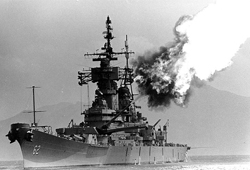
The one incident that still makes me laugh occurred during a helicopter ride on Sunday. We were at Yankee Station off the coast of Vietnam, and they were offering helicopter rides to anyone who wanted one. My 9-man Print Shop was very enthusiastic about it, and I sent them up to two at a time to get rides. After they had all gone, they said, “Hey, Jack, go on up.” I told them AFTER everyone on the ship had had a chance, I would go up for the last ride.
When the announcement came over 1MC that the last ride was going up in ten minutes, I hiked up to the Flight Deck. I was the only Petty Officer in the group, so they put me in the Navigator’s seat and handed me a helmet that was wired to the pilot and co-pilot. I heard the order to take off, and we rose above the deck and headed south, so I knew we were not going over Vietnam. The USS New Jersey was a few miles south of us, and you could hear their guns firing into North Vietnam. We flew towards her, and once we were south of her, she fired her 16 inches. The noise was deafening, and you could see the ship sliding sideways with each salvo. That was when the pilot received an order to go into Vietnam and pick up two wounded Marines.
After we picked them up and had them secured in the bay, the pilot said to the co-pilot, let’s give these guys a thrill and hit the JATO. I braced myself, and within seconds, the helicopter was traveling at 650 miles per hour away from Vietnam. Since the JATO did not last that long, we were back on the ship in no time at all. After we landed and off-loaded the wounded, I asked the pilot why they put JATO on a helicopter. He responded by saying that when they are under attack on the ground, the JATO gets them out in a hurry as they can fly faster than the bullets can travel. I laughed and pointed to the seven bullet holes in the fuselage, and they had no comment.
What profession did you follow after your military service, and what are you doing now? If you are currently serving, what is your present occupational specialty?
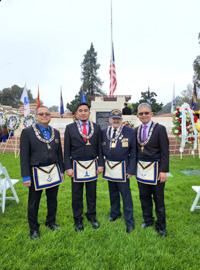
I followed the same profession I started with, PRINTING. I have been a printer since I was 4 years old. My father was a printer, and I learned to set type before I was 5. I opened my own Print Shop after the Navy. I ran the 9-man Print Shop aboard the Kearsarge. I did COMPOSITES for actors and models. I helped start the PLAYBOY MODELING AGENCY and did several composites for some well-known actors and actresses,
I had to give up my business when I suffered a heart attack from Agent Orange in 1991. I went on to become the General Manager of the Independent Journal Newspapers in 1994. I have never quit printing. I have been printing the Camarillo Phone Book for the past 37 years.
When I joined the Masons in 2005, I printed their monthly newsletter for 10 years, which continued until 2019. I now serve as Chaplain. I also joined the Los Angeles National Cemetery Support Foundation and did all the printing they needed, including the Memorial Day Programs.
What military associations are you a member of, if any? What specific benefits do you derive from your memberships?
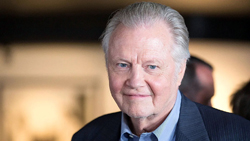
I joined the American Legion for one year. All I received from them was a Pin, 12 issues of their magazine, and a renewal form at the end of the year. Needless to say, I did not renew.
I did join the Los Angeles National Cemetery Support Committee. My Masonic brother, Odas Flake, asked me to join him. Odas was a former Commander of the Purple Heart, Vietnam veteran, former Marine, and former Army, and he had started the Committee with his long-time friend Steve Rosmarin, a World War II veteran. The purpose was to help the Cemetery with anything it needed that the government did not supply. The major issue was someone to put on the Memorial Day Ceremony every year. Knowing that I was a printer, Odas thought I could help with designing the Hand-Out Programs and Flyers. He did not tell me that I would be designing, laying out, typesetting, and preparing it for print by myself. I joined the Committee in 2005, was made Secretary in 2009, and have been doing basically all the typesetting and printing for the now Foundation ever since.
For a number of years, we had Academy Award winner Jon Voight as our Master of Ceremonies. He is currently in an HBO series and has been unavailable. Last year, 2016, I recruited my Lodge brother, Leo Stallworth, ABC7 News, to be our new Emcee. He was a little leery about it when I asked because he had no idea what the Ceremony was like. He said he expected about 50 or 100 people and a 1-hour program. What he discovered was about 1,000 people and a two-and-a-half-hour program with elected officials and guest speakers. He was so taken with the Ceremony that he offered to do it every year for life.
In what ways has serving in the military influenced the way you have approached your life and your career? What do you miss most about your time in the service?
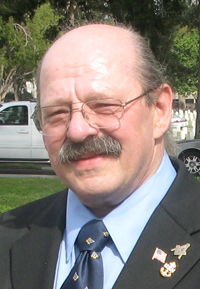
Serving in the Navy taught me that discipline is necessary and that it might benefit the person it is applied to so that they will be better at whatever they do. I always tried to do the very best I could. I guess that was why I got along so well with all the officers and was invited to join them for a great many things that were for officers only. It was either yay or my high IQ.
It has made my career and life better than most. I also have a very sophisticated humor that everyone loves. I wonder, to this day, if I should have been a comedy writer or an author instead of a printer. I bowl on a senior citizens bowling league every Friday and I crack up all the bowlers with my jokes and comments.
What I miss about my time in service are all my shipmates, all the countries I visited and the people there, all the things I saw and did, and being at sea. I found that being at sea is the most relaxing thing anyone could do. I love taking cruises.
Based on your own experiences, what advice would you give to those who have recently joined the Navy?
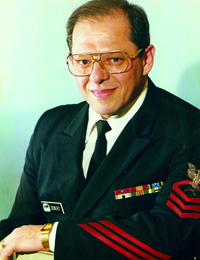
The only advice I can give anyone is to do what feels right to them. The Navy can teach or train you to be whatever you choose if you are willing to work for it. My membership in MENSA had very little to do with my career, and being smart does not make anyone successful.
In what ways has togetherweserved.com helped you remember your military service and the friends you served with.
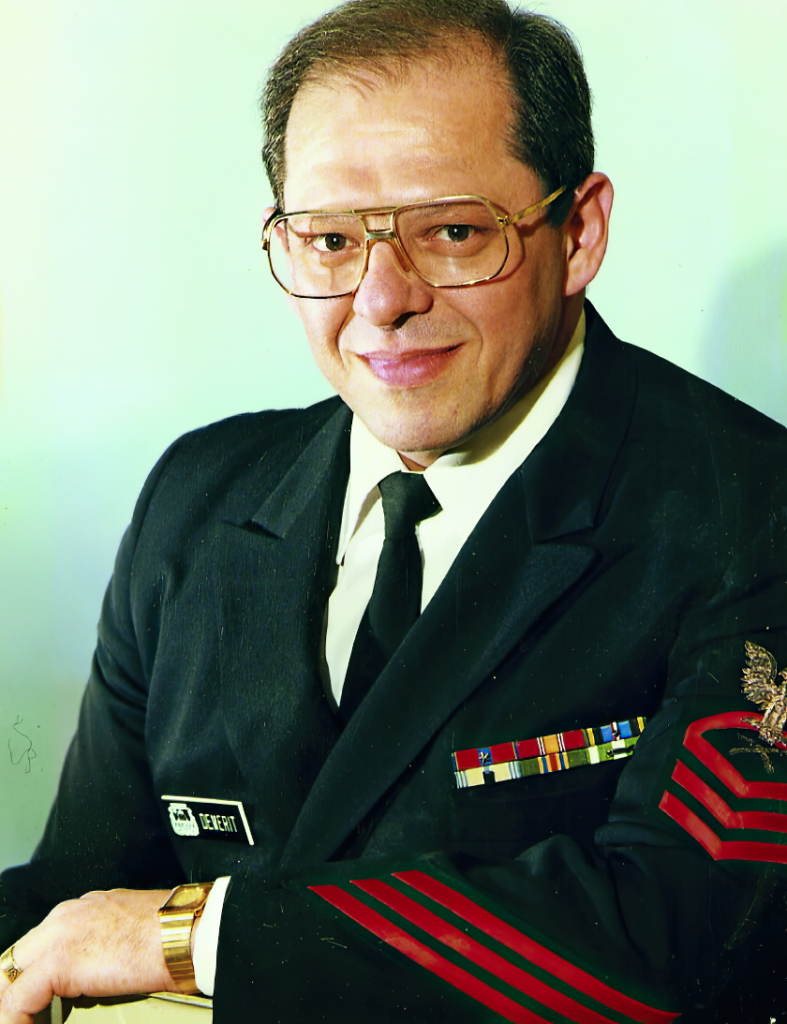
I am not sure that it has. I will always remember the 28+ years that I served. I will always be proud of that. The medals I was awarded have nothing to do with it. I did not do anything just to earn medals and awards. I did what I did because it was the right thing to do. When I retired, I was Chief of the Boat of a Nuclear Submarine Repair Group. I can only hope and pray that some of me rubbed off on those I served with.
Together We Served has helped me find some of my old shipmates, and I am thankful for that.
PRESERVE YOUR OWN SERVICE MEMORIES!
Boot Camp, Units, Combat Operations
Join Togetherweserved.com to Create a Legacy of Your Service
U.S. Marine Corps, U.S. Navy, U.S. Air Force, U.S. Army, U.S. Coast Guard
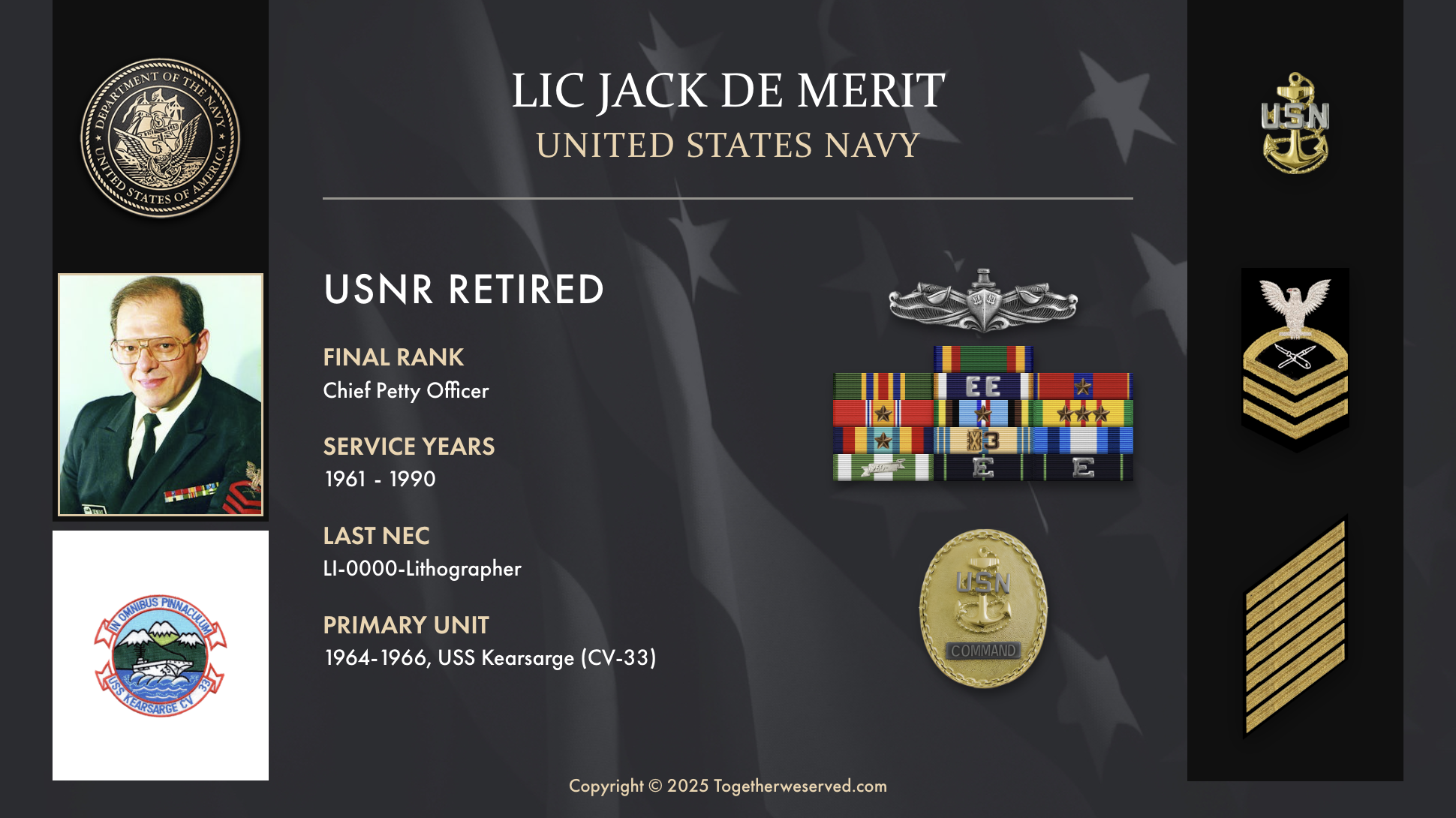
Well done Chief.
Robert D Carr, LICM, USN, Retired